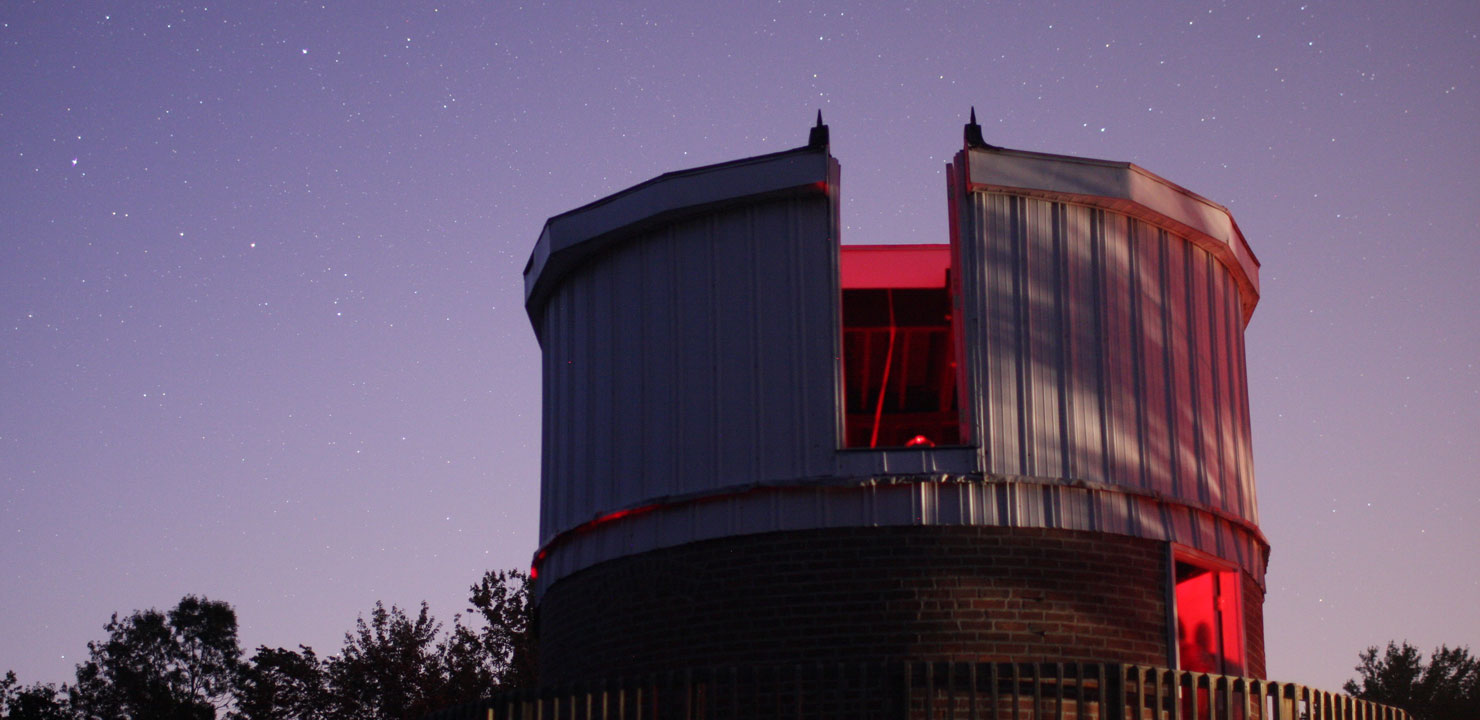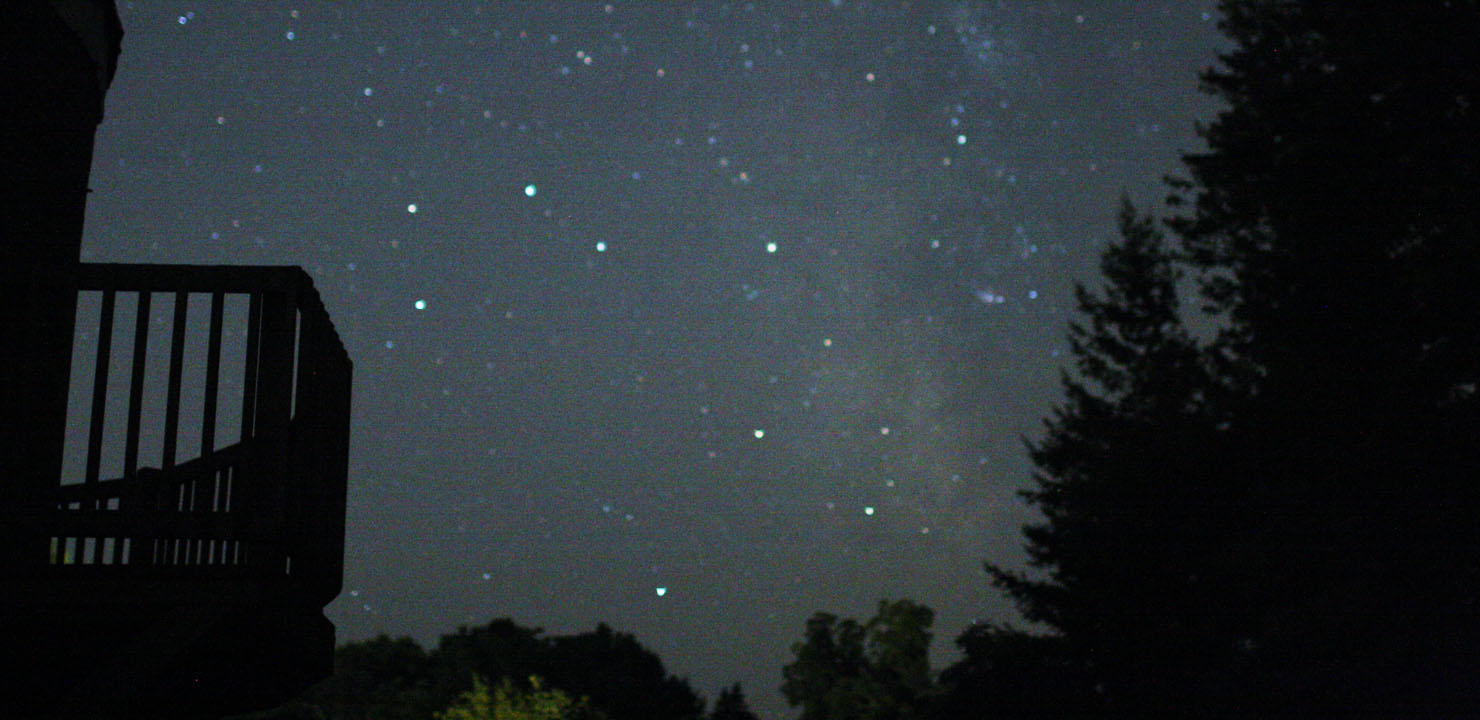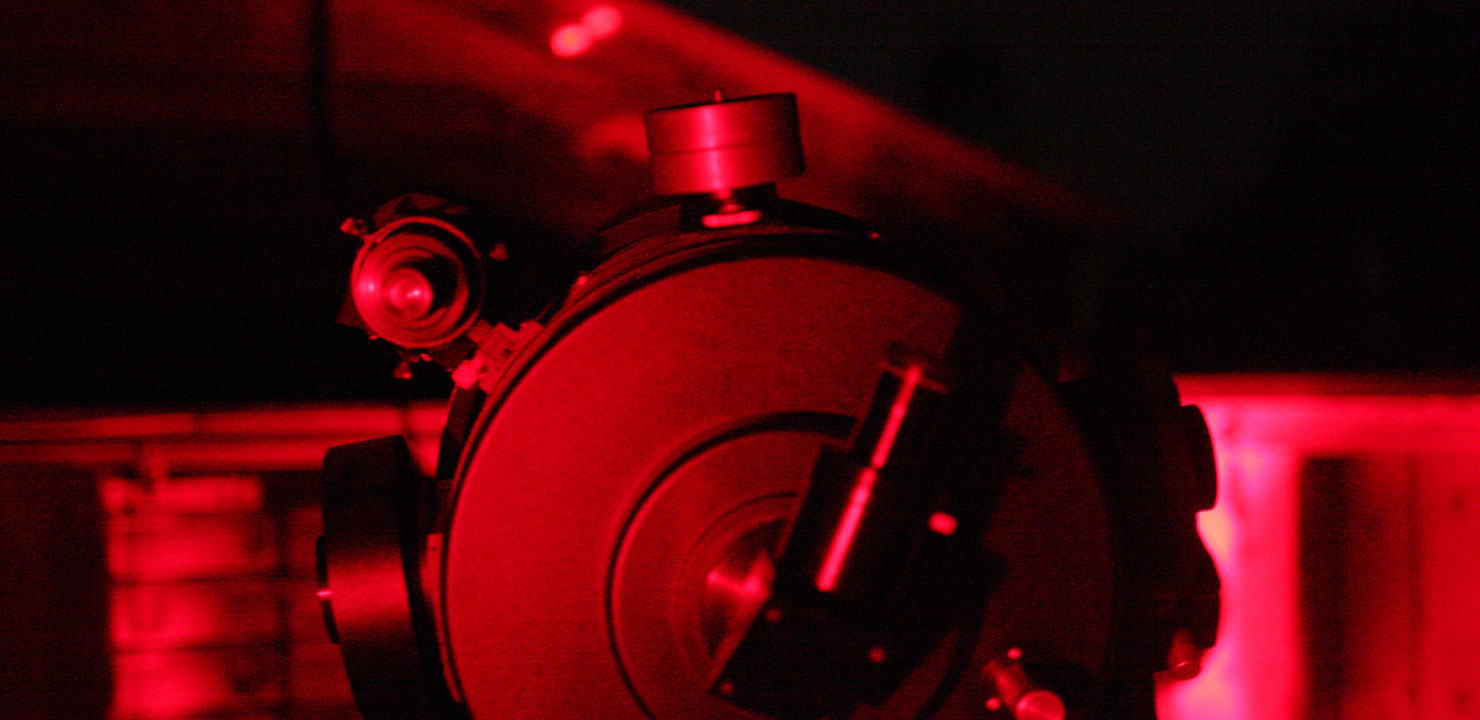
Skyscrapers' Observing Report
by Bill Gucfa & Bob Napier
I arrived early to open the observatory and let the Alvan Clark cool down as much as possible. A couple from the Snake Hill road area stopped by long before it was dark enough to observe, just to make sure we'd be open. Soon after, member Chuck arrived and then Bob Napier and Jim. I waited awhile until we had a pretty good group and pointed the scope at Saturn, relieved that it was still high enough to be seen over the SW horizon. We had around 15+ people show up and they were all extremely surprised at how good the image of the ringed planet looked. Many seemed truly amazed and commented that Saturn looked like a photograph. I rotated the group around the scope and some got three or four untiring looks at the planet. I explained that if they really wanted to learn the night sky for their backyard viewing pleasure, they should get a star map from the web and comfortable lounge chair and start with a familiar constellation or asterism like the Big Dipper and learn the lesser stars from there.
Closing the doors to the observatory, I herded the group outside to the wide open view of the sky where each prominent constellation was pointed out with my green laser, and steps to "learning the sky" were explained. I have to admit, have not seen such an enthusiastic group of star gazer wanna-be's in a long time! There was no shortage of questions!
The night was clear and beautiful, with the summer Milky Way stretching overhead. The mosquitoes seemed to have gone into the city for the evening, thank goodness!
After our wide sky observing adventure, everyone (to my surprise) when back up to the telescope totake a look at M4 in Scorpius and then Albireo in Cygnus. The rest of the night consisted of UFO stories, the possibility of an observatory ghost, and promises of a return Saturday night visit after having such a fun evening!
Bill Gucfa
Arriving at Skyscrapers' Seagrave Observatory shortly after 8 PM, Bill G. was already busy opening up the Clark telescope dome for the evening's public and members' observing activities. Jim H. was there as well trying to run down a story for the newsletter. There was one small glitch starting the Clark drive operation. The counterweight that maintains mesh of the drive gears would not clear the sector arm that actually transfers drive motion to the Right Ascension axis of the telescope. Bill gently moved the counterweight to a position to the side of the sector arm and the evening's observing went on as usual. The observatory sign was put out on the road post and red lights were turned on to let the public know that the observatory was open for the evening. Observing Saturn was a prominent object for the evening through the Clark telescope just above the tree line in the western sky. Also, Bill G. used his green laser pointer to also show people constellations and bright stars in the sky for naked eye viewing.
I opened up the 12-inch Meade telescope roll-off roof and started power on initialization and alignment procedures according to the Meade Instruction Manual. Centering the alignment/synchronization stars was very easy in early dusk light using Meade's alignment procedure. In some prior observing sessions the finder scope was left in very poor alignment with the main scope. Thanks to whoever the previous operator was, this time the finder scope was left in perfect alignment with the main scope. One issue I encountered was that during the alignment procedure, the hand box instructions say to position the scope at 90 degrees Declination (Dec) and 0 degrees Hour Angle (HA) as an initial starting point. 90 degrees Dec is the north celestial pole position, ...well, someone had set the Dec setting circle to 0 degrees for the north celestial pole position. That slight oversight will need to be corrected. Once alignment procedures were completed, the 12" Meade Classic operated flawlessly for the rest of the evening and positioned all objects requested in the main scope's eyepiece field of view, with just minor tweaks on the control hand box for perfect centering.
When public guests started arriving, Jim H. steered them to the open scopes and answered their questions about the Society and astronomy. Chuck, from New Bedford, also assisted. Guests observed several different types of celestial objects. Saturn was below the tree line to the west, so a globular star cluster, M13, was up first, followed by the Whirlpool Galaxy M51, the Smoke Ring nebula M57, the Dumbbell Nebula M27 and the very colorful double star Alberio, etc, etc. Explanations of what each object was and the type of object opened up many questions from out guests. Our home galaxy's Summer Triangle of stars, along with their host Constellations was pointed out too. Several guests commented on how easy it was to just push a button on the hand box and the telescope would move to the various objects in a quick and accurate manner, as opposed to the vintage 1878 Clark telescope that had to be manually moved to different objects. I pointed out that there was a big difference in technology between the recently restored 19th century designed Clark and the late 20th century designed Meade telescopes. The Meade telescope had a built in database of over 100,000 objects and their positions in the sky, far more than a human operator could remember, and could position to any one of them just with a few clicks of the hand box keys.
Among our approximately 25 guests were some teenage ladies and gentleman who came from Providence, a young (well, just about everyone is "young" to me) 20's something couple repeat visitors from Cranston, a three or four time repeat visitor from Foster, a middle aged couple from Scituate and a scattering of others from Foster, Glocester and other guests from various areas of RI and MA. One gentleman from southern MA came with a mirror cell he was constructing for his 8" Dobsonian and was looking for advice as to how he might improve it to better support his new mirror. Minor suggestions were made as to how to better retain the mirror in the cell if it tipped too far forward.








